Text
Goodmorning Houses
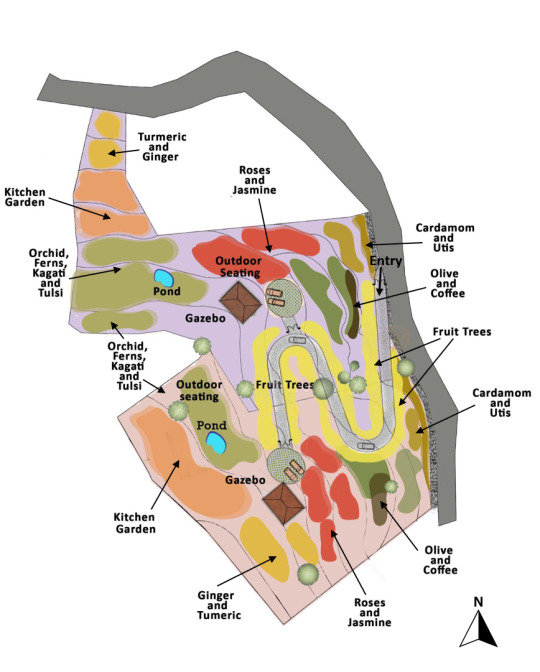
Continuing the story of the Sharma and Parajuli families and our task of land development and Vision of their jointly acquired thirteen ropanis land nestled amidst the awe-inspiring panorama of the Himalayas: we present to you The Good Morning Houses in Buchakot, Kavre.
The crafting of the land:
Inspired from our own action architecture in Suntakhan (2020) and Turiyam, we proposed land stabilization using a series of gabion wall. This technique is not only cost effective the land between the gabion walls can be used for landscape/plantation.
Strategically implementing culverts, swales alongside facilitates continued water flow tackling watershed management head-on.

Intensifying Flora:
The landscape essence of the land area is further enhanced by carefully selected indigenous plant species. Utis which help in adding stability to slopes that tend to slip and erode will provide canopy of sun-filtering shade to coffee and cardamom. Moist loving plants like orchids, Zephyr lily, orange lily day blooms near the watershed area while roses, Kahili Ginger, Pink Dhatura flourishes in the sunlight.
Thorny Agavaceae and cacti were strategically placed to act as a natural boundary, adding both beauty and security to the site.

Locating two cottages:
After dividing the land equally for the both families; and finding the best option for road access is from the northeast part of the land the focus was on creating a harmonious living space. The Sharma family cottage is placed at the level of +1416 m with North-east orientation. Meanwhile the Parajuli family the cottage placement is at + 1420 m with pure east orientation. The road weaving tales of connection and camaraderie between the family, complete with enough parking spots for both.


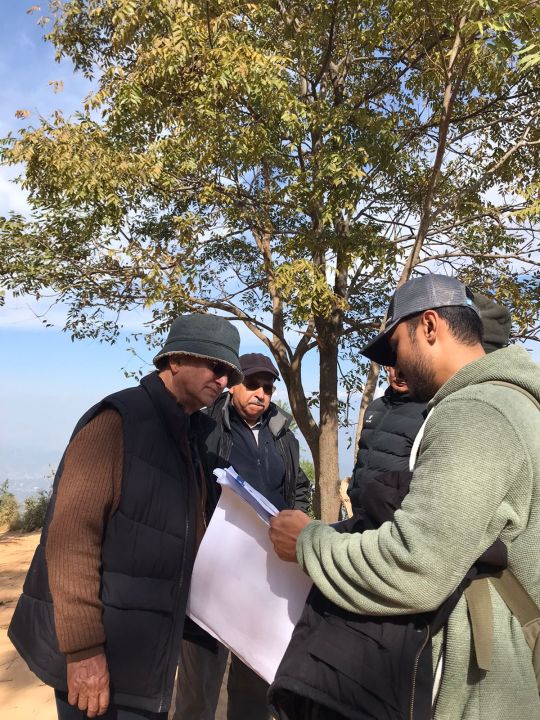

All the preparation work and setting out has been done. Now let us hope for an equally careful, sensitive and pro-ecology implementation.
0 notes
Text
From crafted natural materiality details to innovative re-purposing of resources, we are proud to share the transformation/expansion of the Jwagal house.


While the project is near completion, the novel garden room is completely embraced by the lush garden surroundings.
Re-claimed window frames got a new life, while subtle hues of colored glass are set in a diamond shape pattern.
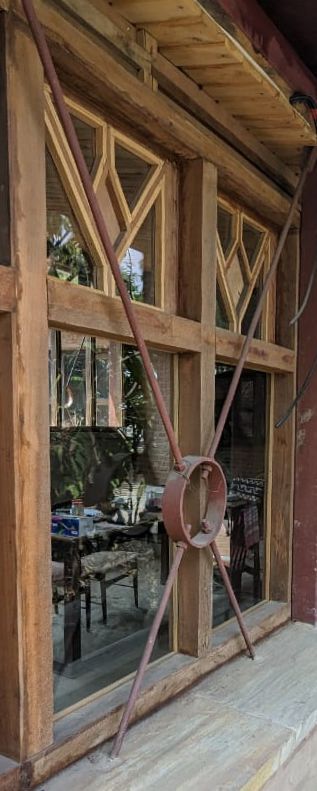

Metal bracings have been designed alternating from on inside to outside, to make the house earthquake resistant.

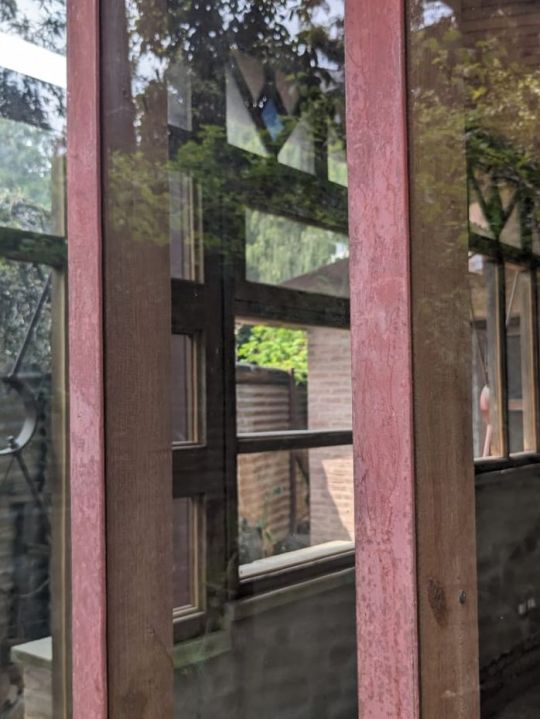
Morning sunlight gracefully filters through the eastern façade, illuminating the double-glazed windows, framed in metal and timber. The wall-embedded hooks are ready for a yoga session.
Good morning Jwagal : what a start of the day !
0 notes
Text
Details of the details

This week, we will take you deep into the world of materiality through hand-crafted piece of furniture in the Bliss project. From the selection of materials, to the making and finishing of the crafted details, lets see how the furniture comes alive!
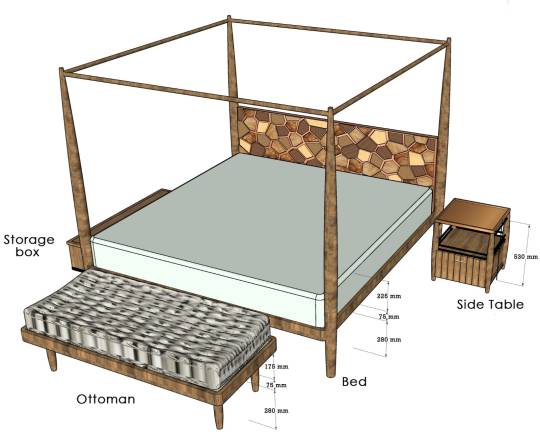

Ar. Jeenus, who kick started his 1st Materiality lecture at WCFA last year, worked side by side with Prof. Anne on this project. The pattern design of the bed's headrest draws inspiration from the existing crafted stone façade.
We further selected a series of timber varieties at the Bliss: Mango, Nepali Pine (Sallo), Sal, Haldu and Chaap. Set into a rosewood base, the five beautiful timber varieties are encircled by a 5 mm thick copper rim.


After the setting out of the voronoi pattern by pencil Jeenus supervised the actual cutting of the timber pieces and the bending of the copper strips. Once the final layer of protective lacquer had dried up we had forgotten about the painstakingly precise job of embedding the individual pieces into the rosewood base.
We continue to explore the art of materiality and celebrate the beauty of crafted details!
1 note
·
View note
Text
WCFA x SMA
SMA kick started the February month with Nepal and Southern India collaboration through an interactive input lecture by Ar. Pasang (SMA) and Ar. Sabina (SMA) for the students of WCFA on Sunday 16 Feb.

Once the WCFA students and faculty arrived in Nepal on the 24th of Feb for the Studio 6 study tour, Team SMA joined their journey at The Living Mountain Lab, in Godawari.

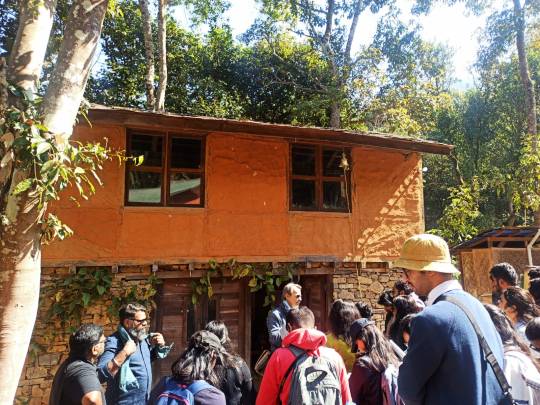
The students got information about the Trombe Wall building, Model house, medicinal and the herbal garden, bio-composting, water retention ponds and what all !
After a good Newari Thali at the Yala Laveku Kitchen , we marched to the Patan Durbar Square,where Dr. Rohit Ranjitkar, Dir KVPT gave a deep insight of the historical Patan Palace, highlighting the challenges of conservation architecture.
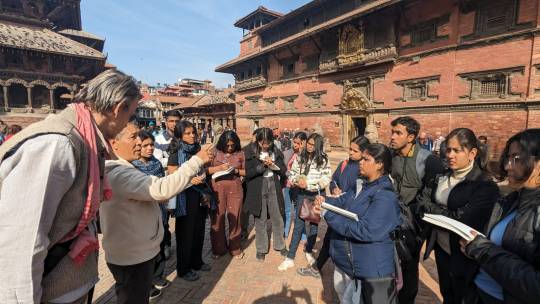

In visit to the Shree Shila Devi Primary School in Dhoksan by Supertecture, students saw how collected and salvaged building materials can be reused. Although the concept is fantastic, the students were a little underwhelmed with the quality.
Team SMA, from Nepal and the architecture colleges of South India collaboration ended with the final talk by Ar. Pasang in RV college organized by Associate Prof. Bikramjit Chakraborty supported by the Principal Dr. O P Bawane.

The SMA team looks forward to more future collaborations!!
1 note
·
View note
Text
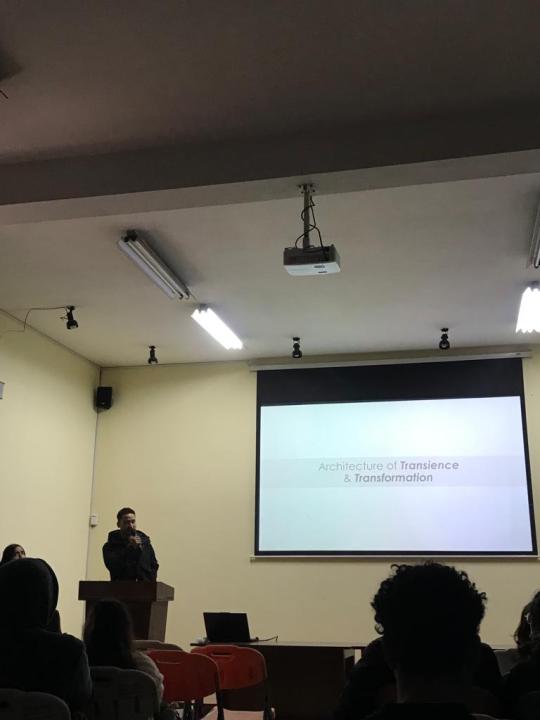

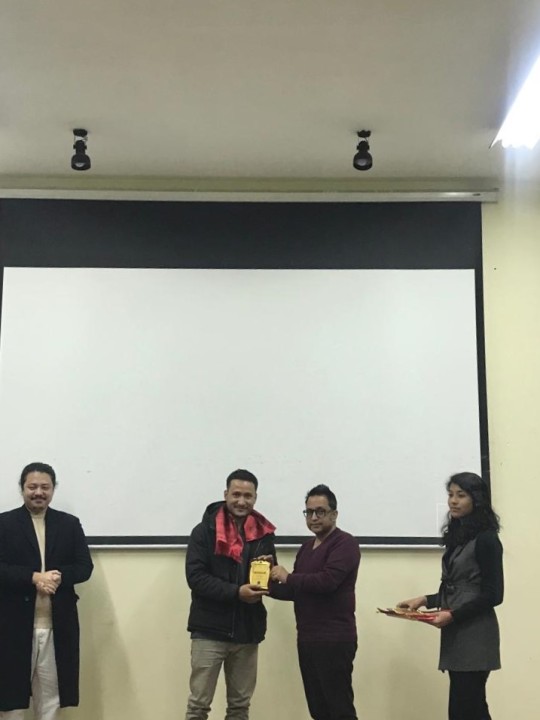
SMA's recent activities include an engaging talk session by Architect Jeenus at Pulchowk's ASA exhibition. The talk, titled "Architecture of Transience and Transformation," focused on the innovative approach of repurposing old buildings instead of demolishing them. Architect Jeenus passionately discussed the effectiveness of intervening and transforming existing structures for new purposes. Drawing inspiration from notable projects like the Samsung Opera House and our very own SMA's Kalagaon, he shared valuable insights on the advantages of adaptive reuse within the contemporary architectural context.


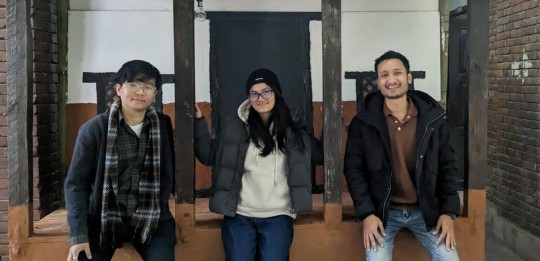
In addition to that, panels showcasing the remarkable work of Nepalese architects that were exhibited on were contributed to the exhibition, offering students an insightful glimpse into various projects and architectural practices in Nepal. The entire SMA team also attended the event, ensuring that they were present to answer questions and engage with students who were keenly about the exhibited panels.

SMA also welcomed two interns from SPA, Delhi to the team. As our team continues to expand, we eagerly anticipate sharing the exciting experiences and adventures that lie ahead.
More soon!
3 notes
·
View notes
Text


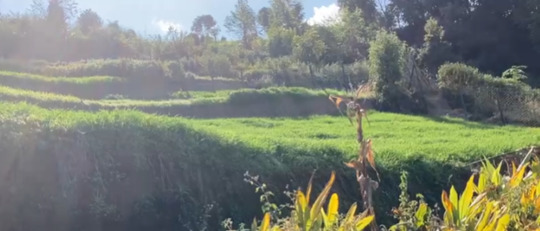
Many years ago, pre-Covid, Alisha and prof. Anne had visited land which the Sharma and Prajauli families jointly acquired. Orientated to the East, this a captivating piece of land in Buchakot, Kavre, got the name Good Morning houses. Almost four years later, we were asked to work out a Vision for the thirteen ropanis with breathtaking panoramic Himal views and identifying the locations for the of the two future family homes.



The substantial level difference of 35 m. from the highest to the lowest point, posed a design challenge. The land close to the main road, had started to crumble down due to rampant road widening. Team SMA undertook a comprehensive analysis before we designed a vision for best possible access option / Gabion stabilization/ soil holding planting scheme taking the natural watershed in account.
Several site visits combined with sectional 3D studies and a series of open design process meetings with principals of the Sharma/ Parajuli families, we held the final presentation on the land itself !
It was a true collaboration, were we could add the value required. Next will be the actual crafting of the land, incl. an improved watershed management, while
simultaneously intensifying the existing flora.
1 note
·
View note
Text
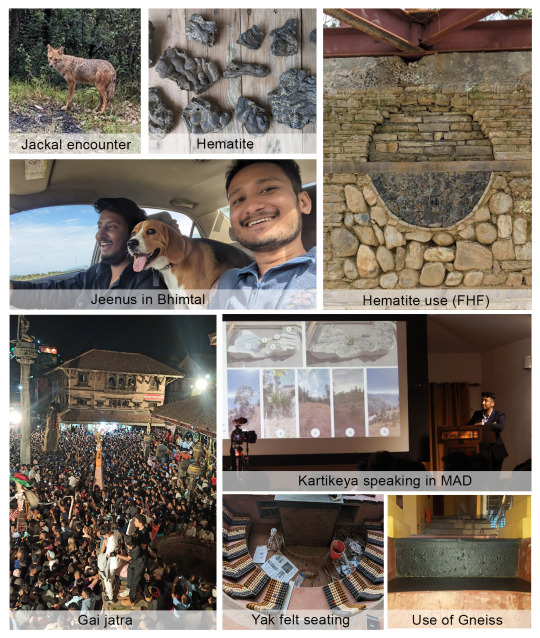
Just after the grand MAD event we had organized this year, a five-week-long exchange between Ar. Jeenus (SMA) and Ar. Kartikeya (our sister team HAP) took place. Both Jeenus and Kartikeya were already geared up as they had given their (first ever) public talk during MAD. This swap gave both architects fresh perspectives and unique experiences.
Jeenus got to know about the use of Hematite in architecture (Fiddleheads Farm), which was new to him. In Bhimtal, working with seasoned Ar. Himanshu Lal and the small HAP-team, he got exposed to Kumaoni building techniques in real-time, and he joined in the Indian design process. This exchange for Jeenus was knowledgeful and packed with unusual experiences like encountering a jackal. Surely, calm Bhimtal was good to him!
Ar. Kartikeya arrived as a speaker at MAD in the Kathmandu Valley. His subsequent exposure as a member of the larger SMA team under the Guidance of Prof. Anne Feenstra was a roller coaster of exposure. he got to work with new materials like Gneiss as flooring material, rosewood for furniture and yak felt as seating, in Bliss Fulbari. Captivated by the sheer grandeur of Newar traditional architecture combined with partaking in some of the festivals, bustling Kathmandu felt quickly like home to him.
1 note
·
View note
Text
Spot-s X
Last Friday we welcomed Ar. Amar Gurung to be SPOT-S number Ten. After completing his Bachelor's degree from the University of Tasmania (UTAS) and a Master's degree from the Royal Melbourne Institute of Technology (RMIT), he embarked upon his architectural journey in his homeland, Nepal.
The principal of AMAR architects took the 40+ audience on a tour along his thesis, his interior designs/stage design and building construction sites. He walked us through multiple design thinking processes and narrative choices.
During the Q & A session, many conversations were about the use of developing AI features, opensource climatic data for design decisions and the massive difficulties of getting a project successfully implemented in Nepal. These intense design discussions warmed up our Studio on such a cold day.

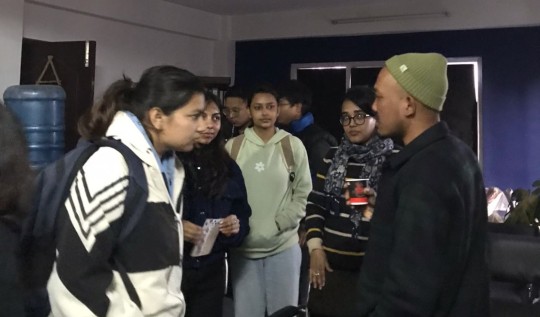



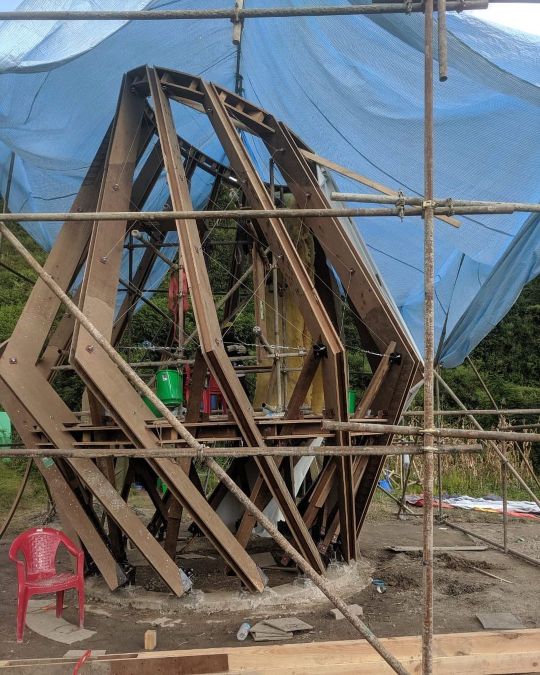
1 note
·
View note
Text

Bliss Breakfast
The transformation of the former family breakfast area with plastic sink, wobbly pine plank cupboards, funny glass shelves on pine blocks has been completed. It is now unrecognizable with its elegant Rosewood timber cupboards, and dedicated areas for other utilities.
The 10 mm thick matt white finish steel table looks gorgeous. This steel top feels like something between the steel hood of a Rolls Royce Phantom V and a Leopard 1 tank. Slender V-shaped legs emerge from a single point from the Telia-gneiss floor.
Good morning or good night, this breakfast/souper table allows uninterrupted views of the Himalayas. Interestingly, it took 7-8 people to carry the steel table to its designated space and to install it. Teamwork!
2 notes
·
View notes
Text
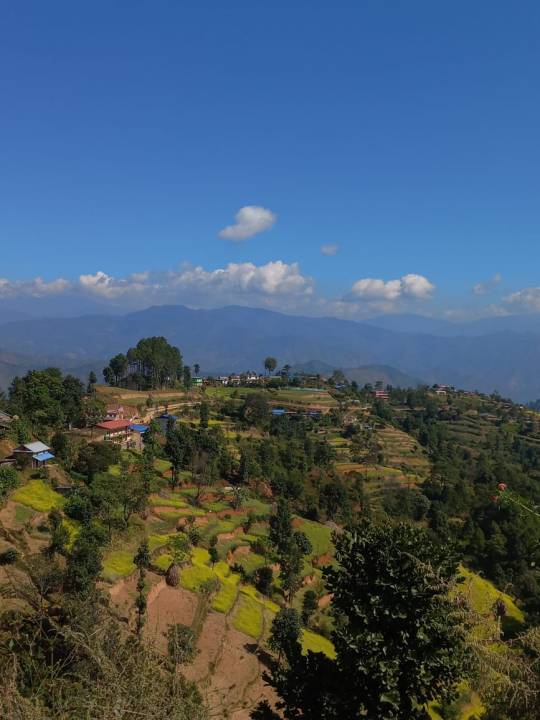
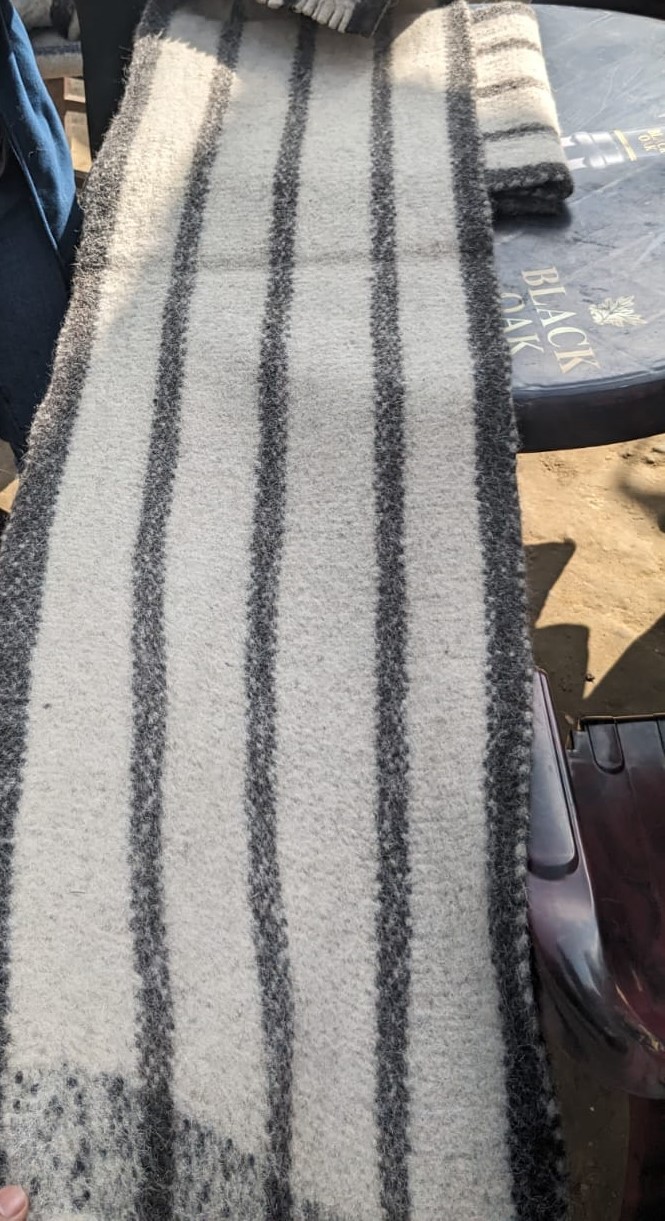



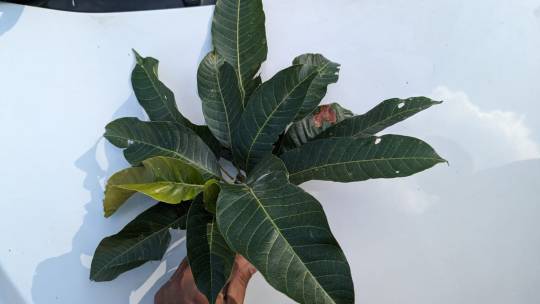

Cross-section 3/11
Dusty Kathmandu faded along Bhaktapur in the window of our taxi. Just the start of winter, it was chilly when we got off for morning chiya in Dhulikhel, on the way to two sites in Fulbari. While we had some delicious chiya and Sel Roti, a typical Nepali breakfast during the Tihar season, our eyes went towards a guy carrying sheep-felt rugs. We chatted about how, where and by whom the rugs were made. In Netra Gurung's village of Panch Pokhari, Sindhupalchowk (altitude 4100m); north of Kathmandu, the villagers rear sheep, source the wool and knit these beautiful rugs with traditional equipment. Again we drove, with the spectacular view of 'Rato-mato', yellow mustard, snowy mountains topped off by white clouds, towards a hearty lunch at a local shop near our site. With that Dal Bhat power, we finished the site inspections and headed towards another 13 ropani site to collect soil samples and information on existing floras. Wrapping up an eventful day filled with brainstorming sessions, interesting conversations and 180 degrees of mountain view, we had a little visit to Dabur headquarters before hitting the road towards Kathmandu.
0 notes
Text
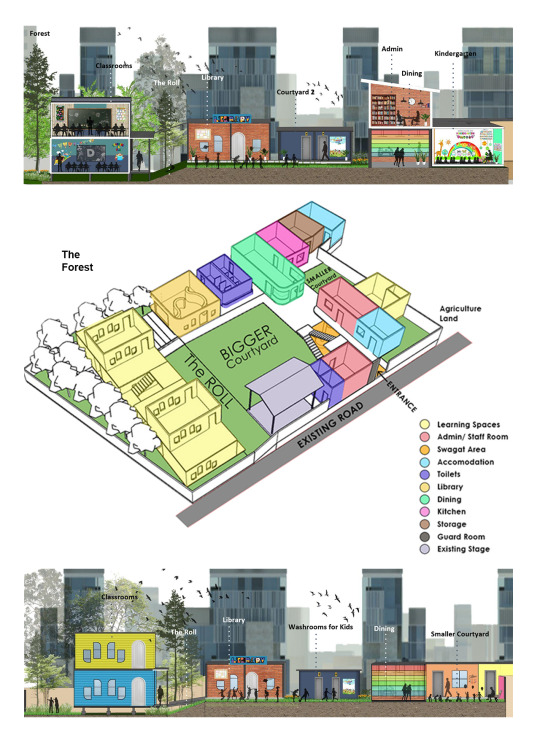
OGN part 2; Child-friendly design = creating a safe and conducive environment.
Orchid Garden Nepal school has grown over the years. They naturally needed more thoughtful and functional spaces, enough for the children to thrive.
Our design strategy:
On the newly introduced Upper Floor level we placed 3 functions: 1/ administration, 2/ volunteer rooms and 3/ classrooms for older students for whom climbing up the stairs wouldn't be hazardous. The ‘welcome area’ doubles up as a waiting space with display walls for art work/writings by the children, which the parents can enjoy while dropping off/picking up their kids.
We created two interconnecting courtyards; a small one adjacent to the Kindergarten, the large one for the bigger kids, who can have a blast at The Roll. With the central canteen, both courtyards are visually connected. Play, Eat and Repeat. As a break from the stereotypical learning, ‘Farm’ and ‘Jungle’ allow for outdoor learning and natural adventures in an urban context. The big question is what OGN will be able to do with this Architecture for All work!
0 notes
Text

OGN part 1; Architecture for Everybody!
Bina Basnet's journey started as a teacher in an orphanage. Her observation: a lot of low-income families with day-to-day labor, took their small kids to their workplace (laborers, street vendors, domestic workers, etc. with some addicted to drugs) as a good and free daycare did not exist. She thought about what could change this as small children years are super important. How could they learn, play, discover?
Bina set up Orchid Garden Nepal (OGN) in 2006 at Kalopul, Kathmandu, with the help of Van 't Sant family (Netherlands) and Dahal family ( Nepal).
While urbanization was ongoing and the owner of the land raised the courtyard level, serious floods started to happen in the last years. This is when they called us for help. We organized a design charrette with 4 teams: Team Happy, Peace, Polite and Team Netherlands. The best were developed further, keeping in mind the importance of spatial quality of the school as a learning environment.
More soon!
1 note
·
View note
Text
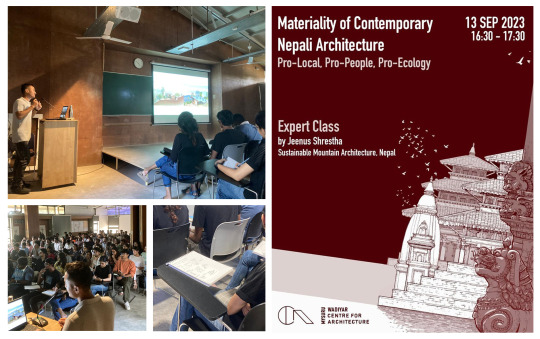
Update on adventures of SMA team member
After Jeenus's talk at MAD, he recently gave a Talk about the Materiality of Contemporary Nepali Architecture at Wadiyar Centre for Architecture, Mysore. The talk mainly focused on Pro-local, pro-people, and pro-ecology architecture achieved from the use of unique natural materials like Slate, gneiss, hematite, jhingati tiles, copper/ brass and yak wool.
The audience spectrum was from newly joined first-year students to thesis applicants along with faculty members. The presence of 5 students and 3 researchers from Aachen University, Germany made it more special.
The lecture was a success judged by the responses. In fact, it was such a good dialogue that Prof. Anne and Jeenus nearly missed the train back to Bangalore.
2 notes
·
View notes
Text
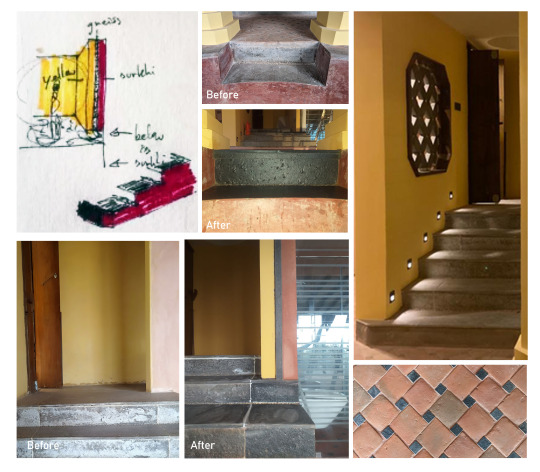
While the first sneak peek of the Fulbari project was on the hand-crafted Gneiss Jaali, this update is about the floor and steps.
The original floors have been painstakingly restored, thus respecting German artist-entrepreneur Hans Hofner’s original geometrical pattern in Telia tiles and Gneiss. Careful corrections of detail work on the steps were made and a novel vertical Gneiss strip on the wall that separates the yellow entrée wall and the natural surkhi-lime wall beautifully.
Stay tuned as site work in Fulbari is in full swing!
1 note
·
View note
Text

Glad to share that MAD got seriously covered by the national and international media.
Massive thanks to Sonia Awale for framing the event so well in the larger Himalayan context with a full center fold in Nepali TIMES.
Enormous appreciation for Sunena Maju, who amazingly wrote her farewell story about MAD for the well-known global Design platform STIR World, just before landing in New York to do her Masters.
Good job of MAD outreach Sanchita.
Last but not least, watch out for Nepali national Himal Khabar with Maheshwor Acharya's article on MAD. Coming soon!
Read the articles here:
2 notes
·
View notes
Text



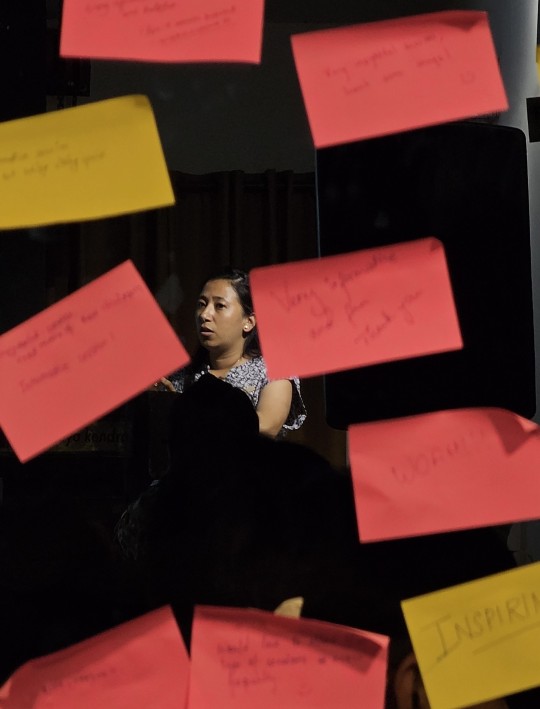


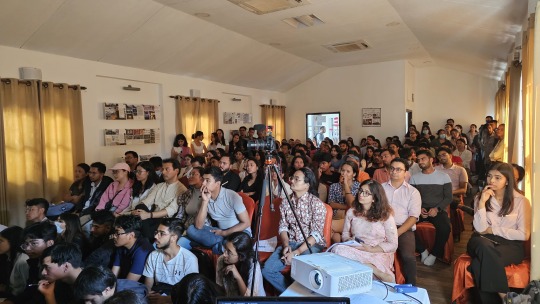
It was an absolute rollercoaster for Mountain Architecture Dialogue! Exhibition of 36 mountain architecture projects, 24 speakers and moderators, 4 + 1 workshops and almost 300 participants.
Amazing 10 hours of MAD!
2 notes
·
View notes
